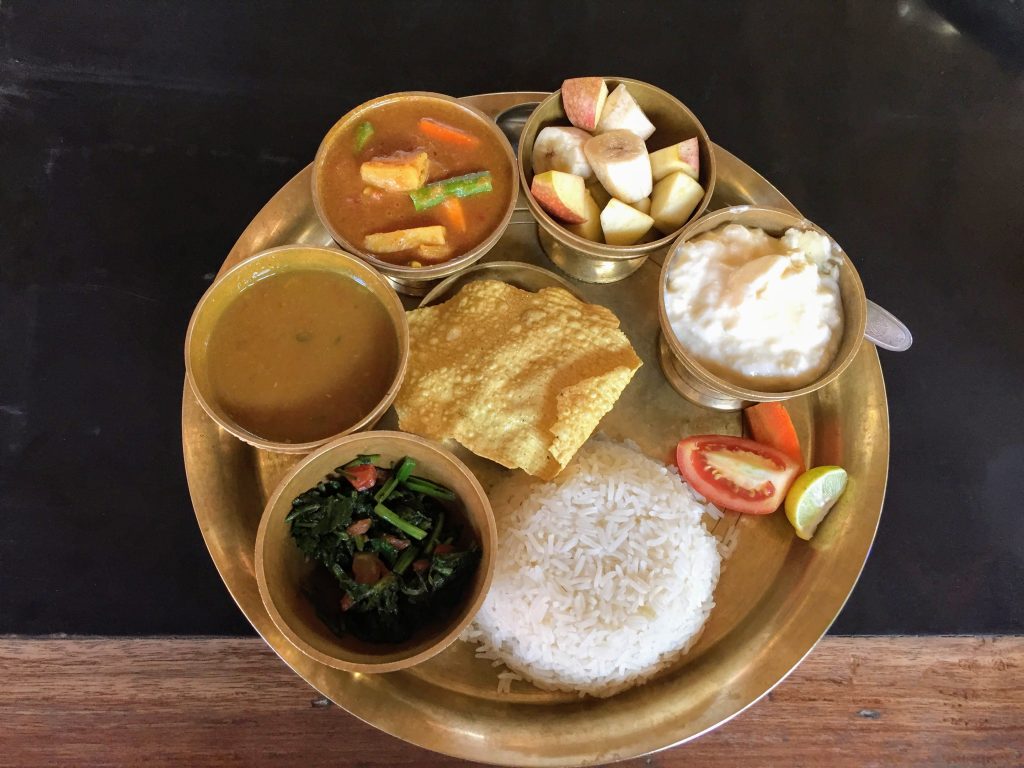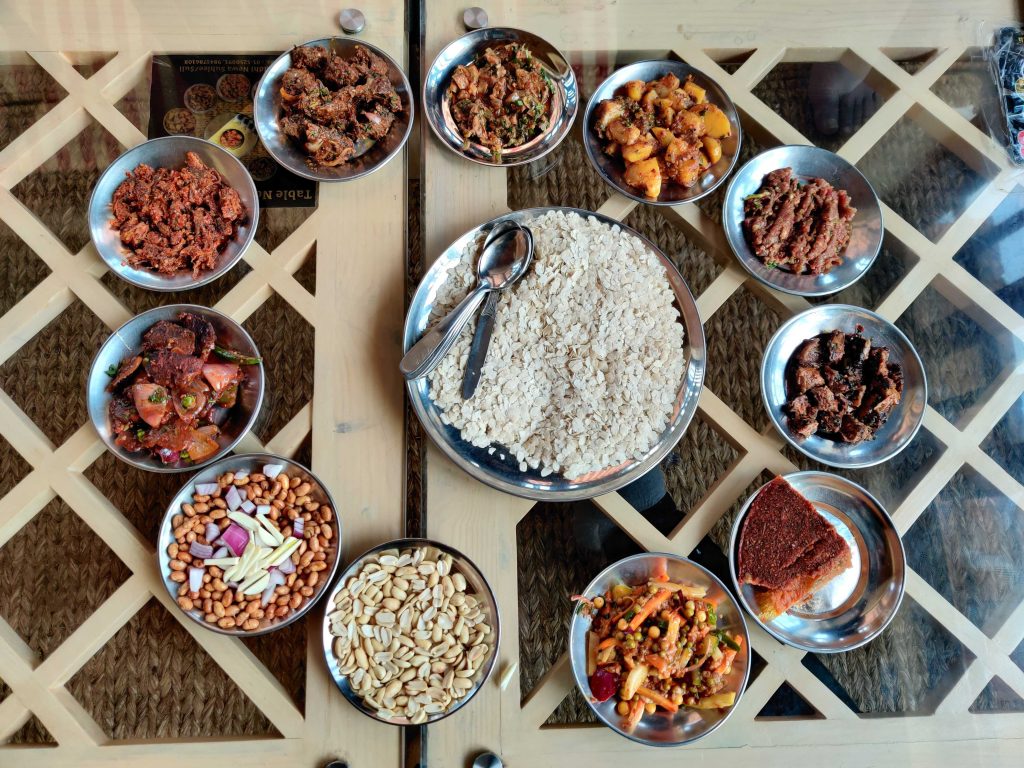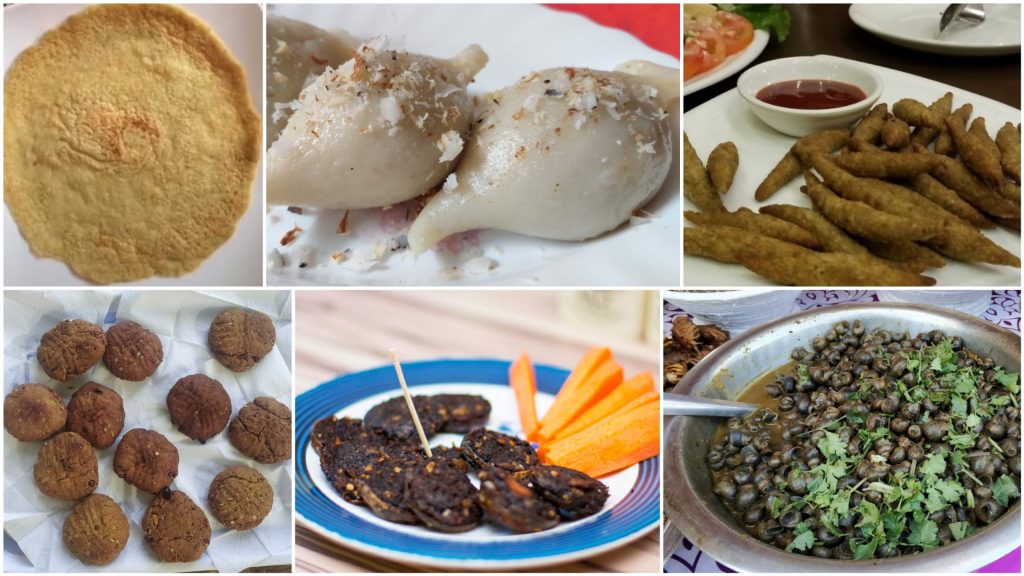Nepal is a small landlocked country located in South Asia. It is known for its natural beauty, diverse culture, and delicious cuisine. Nepali cuisine is heavily influenced by the country’s geography and climate, as well as its neighboring countries, India and Tibet. Here, we will explore the various ethnic foods of Nepal, their unique characteristics, and what makes them so special.
Introduction to Nepali Cuisine
Nepali cuisine is a blend of traditional and modern influences. It is heavily influenced by Indian and Tibetan cuisine and its unique flavors and ingredients. Nepali cuisine is typically healthy and hearty, with various vegetarian and non-vegetarian dishes. The country’s geography also influences the food, with mountainous regions offering different ingredients and cooking styles than those in the flatlands.
Traditional Nepali Dishes
Dal Bhat

Dal Bhat is the national dish of Nepal, and most Nepalese people eat it daily. It consists of lentil soup (dal) and boiled rice (bhat). It is often served with vegetables, pickles, and sometimes meat.
Momo
Momo is a dumpling that originated in Tibet but is now a popular dish in Nepal. It is made with a filling of vegetables or meat and is often served with a spicy dipping sauce.
Sel Roti
Sel Roti is a popular Nepali snack made from rice flour and is often consumed during festivals or special occasions. It is a ring-shaped bread that is deep-fried until crispy on the outside and soft on the inside.
Kwati
Kwati is a soup made with nine different types of sprouted beans. It is typically eaten during the festival of Janai Purnima, which falls in August.
Introduction
Welcome to the diverse and vibrant world of Nepali cuisines! Nepal, a small landlocked country nestled in the Himalayas, is known for its rich culinary heritage that reflects its cultural diversity, geography, and history. Nepali cuisines blend unique flavors, aromatic spices, and traditional cooking techniques passed down through generations. In this article, we will take you on a culinary journey to explore Nepal through its ethnic foods, showcasing the richness and variety of Nepali cuisine.
Diversity of Nepali Cuisines
Nepal is a melting pot of different ethnicities and cultures, and this diversity is beautifully reflected in its cuisines. With over 125 ethnic groups, each with its unique culinary traditions, Nepal offers many distinct flavors and dishes to different regions and communities.
From the Newars of Kathmandu Valley to the Tharus of Terai and from the Gurungs of the Himalayas to the Limbus of the eastern hills, each ethnic group has its culinary treasures.
Newar Cuisines: Delightful Gastronomy of Kathmandu Valley
The Newar community, indigenous to the Kathmandu Valley, has a rich culinary heritage that dates back to ancient times. Newar cuisines are known for their elaborate preparation techniques, unique flavors, and the use of local ingredients. One of the most famous Newar dishes is “Yomari,” a sweet dumpling made of rice flour filled with molasses or sesame seeds, traditionally prepared during the Newar festival of Yomari Punhi.

“Kachila,” a spicy dish made with raw minced buffalo meat marinated in spices, is another Newar delicacy popular among locals and tourists. Newari cuisine is the traditional cuisine of the Newar people, an ethnic group native to the Kathmandu Valley. It is known for its rich flavors and spices.
Newari dishes include Choila, a spicy grilled meat dish, and Yomari, a sweet dumpling filled with chaku (molasses) and sesame seeds.
Tharu Cuisines: Traditional Tastes of Terai
The Tharu community, residing in the Terai region of Nepal, has distinct culinary traditions. Tharu cuisines are characterized by their simplicity, use of local ingredients, and emphasis on natural flavors. “Gundruk” and “Sukuti” are two iconic Tharu dishes widely enjoyed in Nepal.
Gundruk is a fermented vegetable dish made by preserving leafy greens in the sun, which are then used to create a flavorful curry. Sukuti, on the other hand, is a traditional Nepali jerky made by drying meat, usually buffalo, and marinating it with spices before grilling or frying.
Gurung Cuisines: Hearty Delights of the Himalayas
The Gurung community, known for their bravery and resilience, inhabit the Himalayan region of Nepal and have their unique cuisine. Gurung cuisines are known for their hearty and wholesome nature, ideally suited to the harsh mountain environment.
“Gurung bread” or “Gundruk ko Achar” is a popular dish made with fermented leafy greens and spices, used as a condiment with rice or bread. “Kodo ko Roti” or “Finger millet bread,” is another traditional Gurung dish rich in nutrients and a staple food in the region.
Limbu Cuisines: Traditional Flavors of the Eastern Hills
The Limbu community, residing in the eastern hills of Nepal, has culinary traditions that are unique and flavorsome. “Yakthung Thupka,” a traditional Limbu dish, is a hearty soup made with meat, vegetables, and spices, often served with steamed millet dumplings called “Churpi.” Another popular Limbu dish is “Khar,” a spicy curry made with pulses, meat, and local
Thakali Cuisine: A Culinary Delight from the Himalayan Region of Nepal
Nepal, a country nestled in the Himalayas, is known for its rich culinary heritage that varies from region to region. One such culinary tradition that stands out is Thakali cuisine. Thakali cuisine originated from the Thak Khola region of the Mustang district, which is located in the northern part of Nepal.
Thakali cuisine is not only a delectable delight for the taste buds but also offers insights into the unique culture and lifestyle of the Thakali people.
Sherpa Cuisine: A Culinary Journey through the Himalayan Tastes of Nepal
Nestled high in the mountains of Nepal, the Sherpa community is renowned for its resilience, endurance, and unique culinary heritage.

Sherpa cuisine, influenced by the Himalayan region’s challenging terrain and harsh climate, reflects the Sherpa people’s ingenuity and resourcefulness. From warming soups to nourishing stews, Sherpa cuisine celebrates flavors and textures that have sustained the Sherpa community for generations.
Some Unique Nepali Ingredients
Timur
Timur is a type of pepper that is native to Nepal. It has a unique flavor that is slightly bitter and numbing, and it is often used in traditional Nepali dishes like momo and chow mein.
Yak Meat
Yak meat is popular in Nepali cuisine, mainly in mountainous regions. It is lean and high in protein, making it a healthy choice for meat lovers.
Sisnoo
Sisnoo is a type of nettle that is often used in traditional Nepali dishes. It is high in iron and other nutrients, making it a nutritious addition to any meal. It is mainly served with Dhendo, another popular food.
Conclusion
Nepali cuisine is a treasure trove of flavors, textures, and culinary traditions worth discovering. From the traditional dal bhat to the unique regional cuisines of Newari, Thakali, and Sherpa, Nepal offers a diverse and rich culinary experience.
Whether you’re a food enthusiast or a traveler looking to immerse yourself in the local culture, exploring Nepal through its ethnic foods is a delightful adventure. So, grab a plate of momo or a bowl of water and embark on a culinary journey to discover the deliciousness of Nepali cuisine.

